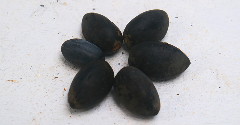‘Taste-adjusting’ chopsticks use electricity to give sensation of enhanced salt
2 May 2022Japanese food company Kirin Holdings and researchers have created chopsticks that use an electrical current to give the perception of added saltiness in food by approximately 1.5 times its actual salt content. They are now working to roll out the technology industry-wide.
In April 2022, Kirin Holdings confirmed it has been working with Meiji University to undertake research and develop an electrical stimulation waveform and chopstick device that alters the taste of low-sodium food by adding the flavour of salt.

The patent-pending tool has been designed in a chopstick-like device to enhance the taste of low-sodium foods. The duo’s research and development comes at a time when there is increasing awareness around the presence of salt in consumers’ diets, particularly in packaged food. Recently, a UK study by Action on Salt found around 70% of ‘meal deals’ contain dangerously high levels of salt.
Research studies progress “taste-adjusting” chopstick development
Describing its research findings as a “major step toward making low-sodium food tastier to aid in maintaining low-sodium diets”, the collaborators conducted joint research to better understand the potential of the technology, commonly referred to as “electric taste stimulation”.
The duo carried out clinical trials with consumers who follow a low-sodium diet. During the trials, researchers looked at differences in the evaluation of saltiness between a sample that imitates “ordinary food” and a sample with 30% less salt.
“Clinical trials have confirmed that the device enhances the salty taste of low-sodium foods by 1.5 times when used by people who follow a low-sodium diet,” says Ataka Takashima, a member of Kirin Holdings’ corporate communications team. “We found that the use of ‘electric taste stimulation’ technology has the potential to increase taste satisfaction with low-sodium diets,” Takashima adds.
Salt reduction technology: From concept to chopstick
Since 2019, the Kirin Group has been collaborating on research that examines changes in taste perception caused by electrical stimulation. Using “very weak” amounts of electricity, which Kirin Holdings says is “not enough to affect the human body”, the company can modify aspects of the science behind generating taste.
When working on the impact that electricity has on taste sensation, Kirin Holdings and the Meiji University’s Miyashita Laboratory have found they can change the function of ions such as sodium chloride, which creates the taste of salt, and sodium glutamate, which gives food and drink its sweet flavouring. By adjusting the functions of these ions, they can also influence consumers’ taste perception by making a particular taste, such as saltiness, appear more or less prevalent in food.
The technology, which uses weak electrical stimulation to change the way people perceive taste, “has been studied for a long time, but its effectiveness for application in a diet has not yet been fully verified”, says Takashima. Therefore, electric taste stimulation has not yet made its way into the food industry, Takashima adds.
Kirin Holdings and Meiji University are working together to develop the technology for wide-scale implementation. Their aim is for the technology to “provide consumers with both mental satisfaction from delicious taste and health satisfaction derived from the nutritional aspects of a low-sodium diet”, says Takashima.
Real-world potential for ‘electrical taste sensation’
Currently, the device is in the form of chopsticks, but the collaborators are considering other applications, including cutlery and tableware such as spoons, forks and bowls.
The device has been designed for use in everyday dining situations. Currently, Kirin Holdings is developing its electrically-stimulating chopstick prototype, Takashima says. A crucial part of the development process is to ensure that the device is easy to use during meals.
The idea is to provide “a tool to enhance taste satisfaction when eating low-sodium meals and make meals tastier, more enjoyable, and healthier”, says Takashima.
Kirin Holdings and Meiji University are currently conducting verification studies to deliver it to consumers “as soon as possible”, Takashima says. “We aim to launch the product somewhere between 2023 and 2024.”
Related news

Chinese food brand wants to give customers ‘the full experience’
16 Dec 2022
Food brand Xiao Chi Jie is revamping Chinese cuisine for the modern American consumer. The Washington-based company sells regional Chinese specialties like soup dumplings, noodle kits, and barbeque skewers direct-to-consumer in the US.
Read more
Regulations spur healthy snacking in Europe
15 Dec 2022
Healthy snack demand is on an upward trajectory in Europe, fuelled by products attaching health halos to their products, according to latest figures by Euromonitor – but regulations may be the real driver.
Read more
Could the EU-Mercosur trade deal be revived?
14 Dec 2022
The re-election of Luiz Inácio da Silva, or Lula, as president of Brazil has prompted speculation that the free-trade agreement between the EU and South American Mercosur bloc could be revived – but the European farming sector has concerns.
Read more
Could menopause-supporting products be the next big opportunity?
13 Dec 2022
As supplement brands launch products to relieve the symptoms of menopausal women such as nutraceutical gummies, the unmet needs of this group is attracting government attention in the UK.
Read more
Plant-based fish and seafood launches around the world
12 Dec 2022
From pea protein-based prawns to microalgae-based tuna alternatives, plant-based alternatives to fish and seafood are on the rise around the world.
Read more
Editors’ choice: Our roundup of the most innovative sweets, snacks and bakery products
9 Dec 2022
The sweets, snacks, and bakery categories are an exciting area, full of fresh and innovative products which are constantly adding meaningful value to the sector.
Read more
Functional food in Japan centres on health and proving claims
8 Dec 2022
The latest Japanese functional food and drink trends put health and product efficacy firmly on the production agenda for new releases.
Read more
Swedish food agency: One in 10 coffee brands contain excess acrylamide
7 Dec 2022
New findings from the Swedish Food Agency have revealed three of 29 coffee products sampled contained acrylamide above limits, reinforcing the link between levels and degree of roasting.
Read more
‘Super nut’? Indonesia’s ‘best kept secret’ wins EU novel food approval
6 Dec 2022
A previously obscure, nutrient-rich Indonesian nut is set to hit European shelves after winning EU novel foods approval that could also help protect under-threat kenari forests on the archipelago.
Read more
Philippines to restrict trans fats in processed foods
5 Dec 2022
Use of artificial trans fats in pre-packed processed foods will be restricted in the Philippines as the country looks to eliminate its consumption from other sources too.
Read more